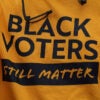While much of the cultural debate about education centers on school libraries removing sexually explicit books, South Dakota Republican Gov. Kristi Noem’s team has been hard at work crafting new K-12 history and social studies standards that her chief of staff calls a “model for the rest of the country.”
Noem rejected an earlier effort in 2021, which her team faults for a leftist slant and for including critical race theory. The governor gathered a new commission to compile standards in 2022, including a former politics professor who had taught at Hillsdale College, a Christian school with decades of outreach in the K-12 classical school movement that is known for its rigorous approach to Western and American history. That former professor, Will Morrisey, served as a facilitator for a diverse commission—25% of which was Native American—that tailored the standards for South Dakota.
“When it comes to social studies standards, the governor wanted us to create a model for the rest of the country, and I think the rest of the country will see a model that they can follow,” Mark Miller, Noem’s chief of staff and a member of the 2022 commission, told The Daily Signal in a phone interview last week. “We think this is an incredible positive change and step forward in terms of providing a true and honest American history for the children of South Dakota from K to 12.”
The Daily Signal depends on the support of readers like you. Donate now
The state’s Board of Education Standards voted to approve the standards in April. Miller mentioned the standards’ three pillars: world history that provides the foundation for U.S. history, Native American history that formed South Dakota, and U.S. history.
Ben Jones, the state historian and a member of the 2022 commission, said the new standards represent a model for the rest of the country because they reject the approach of progressive education reformer John Dewey, who transformed American education to focus on skills, rather than content.
The new standards “put content and knowledge at the center of things,” Jones told The Daily Signal in an interview last week. “I think they’re a model because they excavate the John Dewey progressive notion about skills” and using education as a tool to “funnel students into jobs,” rather than equipping them with the knowledge to be informed citizens.
Some education groups have opposed the standards, suggesting they require students to learn too much.
“I believe that more facts do not necessarily mean better standards,” Summer Schultz, president of the South Dakota School Superintendents Association, told KELOLAND. “We need every minute of the day that we can to make sure our students are leaving those classes at grade level in reading and mathematics so that they have that strong foundation to be successful academic learners later.” She warned that if students are focused on memorizing facts, “they have a lack of balance.”
Jones, the state historian, insisted that teachers can incorporate a great deal of civics and history material into reading lessons. “In the elementary years, the content is going to reinforce their reading,” he noted, which “can be heavy on history, civics, economy, geography, and stories about them.”
He also noted that South Dakota is launching professional development programs for teachers to help them incorporate these civics lessons into the curriculum.
Hillsdale weighs in
Kathleen O’Toole, assistant provost for K-12 education at Hillsdale College, noted that social studies standards “cannot, by definition, require memorization.” Yet she defended memorization as “important for setting a basic timeline in the students’ minds before deeper inquiry takes place.”
“Hillsdale’s own recommended curricula are built on this principle, and in its affiliated schools, teachers lead students through a deep inquiry of history through thoughtful questions and the discussion that naturally follows,” O’Toole added. “In any course of study, materials should be presented in a context that is age-appropriate and takes into account the developmental stages of students.”
O’Toole noted that many state officials, school administrators, and concerned parents often reach out to Hillsdale’s K-12 office for recommendations. In this case, South Dakota tapped Morrisey “independently of Hillsdale.” Hillsdale College did not review or approve the South Dakota standards.
“While Dr. Morrisey’s work was not connected to Hillsdale, we are proud that he used Hillsdale’s generic civics standards as the basis for the new South Dakota standards,” she noted. “The commission customized Hillsdale’s generic materials to reflect South Dakota’s Native Indian tribes and other historical details unique to that state. Hillsdale College believes that high-quality social studies standards should be robust, nonpartisan, and thorough. It is heartening whenever Hillsdale’s work is an aid to establishing such standards.”
Critical race theory
The true root of the controversy may involve debates over critical race theory, an approach to history, civics, and other disciplines that encourages students to find “systemic racism” throughout American institutions and to reexamine every aspect of life through a race-based lens that assumes white people are oppressors and black people are oppressed.
Miller, the governor’s chief of staff, said Noem moved to craft new standards because the 2021 proposed standards had a “leftward tilt” and politicized standards are “simply unacceptable to the governor.”
“We didn’t want to see a leftward tilt in the teaching of history, which we think has infected too much of the teaching of the public school system in general since Dewey,” he explained. “In our history classes and civics classes, we have to be careful not to teach our children that our country has been a bad actor since 1776 or even before that, but rather has been a shining light for the rest of the world.”
Jones, the state historian, said critical race theory is “a great conversation for college students and grad students to have, but it’s not proper historical inquiry.” Proper history involves investigating the facts to draw conclusions, but “critical race theory provides that answer right up front.”
K-12 teachers do students a “disservice” if they teach through a critical race theory lens because it leaves students “underinformed about and unable to test your preconceived notions.”
Jones noted that many commentators suggest that “critical race theory is just teaching about race, which is absolutely wrong.”
“There’s plenty of teaching about race in the standards we have, but there’s no preconceived notion about what the outcome is going to be,” he noted.
Jones praised Morrisey’s contributions for including “plenty of material about race, slavery, the Japanese exclusion laws, Chinese exclusion laws, the KKK.”
Jones and Miller insisted that the standards include the dark parts of U.S. history, but the state historian declared that “the idea that because someone is a certain race, they have certain talents” does not belong in K-12 education.
Jonathan Butcher, a senior research fellow in education policy at The Heritage Foundation who has analyzed the standards, praised them for excluding “woke orthodoxy.” (The Daily Signal is the news outlet of The Heritage Foundation.)
“These standards appropriately reject the woke orthodoxy surrounding radical gender theory and racial preferences found in states such as Minnesota and California,” he told The Daily Signal in a statement Tuesday. “The standards are rigorous and involve a nontrivial amount of facts and specific content regarding notable individuals and events in American and world history.”
World and Native American history
Yet the standards do not just include U.S. history—warts and all—but also the longer history of human civilization.
“The United States didn’t just spring anew,” Miller said. “It came from an intellectual history going back centuries, and that’s the idea for these standards.”
The new South Dakota standards require lessons on ancient Egypt, China, India, Babylon, Greece, Persia, and Rome, along with medieval and modern European, Middle Eastern, and Asian history, at appropriate age levels.
Finally, the standards include a great deal of Native American history.
“The governor wanted a significant role for Native Americans to play,” Miller said, noting that a quarter of the commission was Native American. He mentioned Joe Circle Bear with the Cheyenne River Sioux Tribe, state Rep. Tamara St. John with the Sisseton Wahpeton Oyate Tribe, and Stephanie Hiatt with the Florida Seminole tribe.
“These standards have more teaching of Native American history than any standards South Dakota has had before,” Miller added.
Yet South Dakota’s Native American tribes, represented by the South Dakota Education Equity Coalition, condemned the new standards, claiming that they “lack proper representation of Native American history.” The tribes called for “the reinstatement of Oceti Sakowin references” as in the 2021 proposed standards.
The 2021 proposed standards mentioned the Oceti Sakowin (commonly referred to as Sioux) 24 times, while the new standards adopted this year mention the tribe 30 times. The new standards also mention tribes who once lived in South Dakota but now exist in North Dakota.
“The now approved 2023 standards specifically mention the Mandan, Arikara, Crow, Kiowa, Otoe and other tribes in the history standards,” Jones, the state historian, explained. “Those tribes, in addition to the Oceti Sakowin tribe, will provide students the opportunity to learn of the state’s rich Native American past and present. The 2021 group’s draft did not include these other tribes – only the Oceti Sakowin was mentioned.”
The Oceti Sakowin historically fought the Mandan, Hidatsa, and Arikara tribes in the Dakotas. the South Dakota Education Equity Coalition did not reply to The Daily Signal’s request for comment by publication time.
The Great Plains Tribal Chairmen’s Association, which includes 16 tribal leaders in North Dakota, South Dakota, and Nebraska, condemned the standards in a resolution provided to The Daily Signal. The resolution condemns the standards for including “culturally inappropriate stereotypes,” such as portraying Native Americans as primarily as warlike and not explicitly mentioning Native American religion. It also condemns the standards for “vague references to whole sections of the Oceti Sakowin Essential Understandings.”
The resolution also claims that the standards “include indoctrination and specific religious instruction,” suggesting that they violate the premise that “state and church should be separate.” The standards do require students to learn about the historical impact of Christianity, but they also mandate lessons on Islam, Buddhism, and Hinduism.
Butcher, the Heritage scholar, noted that the standards include “a significant amount of Native American history, which is what state educators should do to help students learn about how their state’s history is unique compared to other areas of the country.”
Editor’s note: The author of this article graduated from Hillsdale College in 2012.
Have an opinion about this article? To sound off, please email letters@DailySignal.com and we’ll consider publishing your edited remarks in our regular “We Hear You” feature. Remember to include the url or headline of the article plus your name and town and/or state.





























